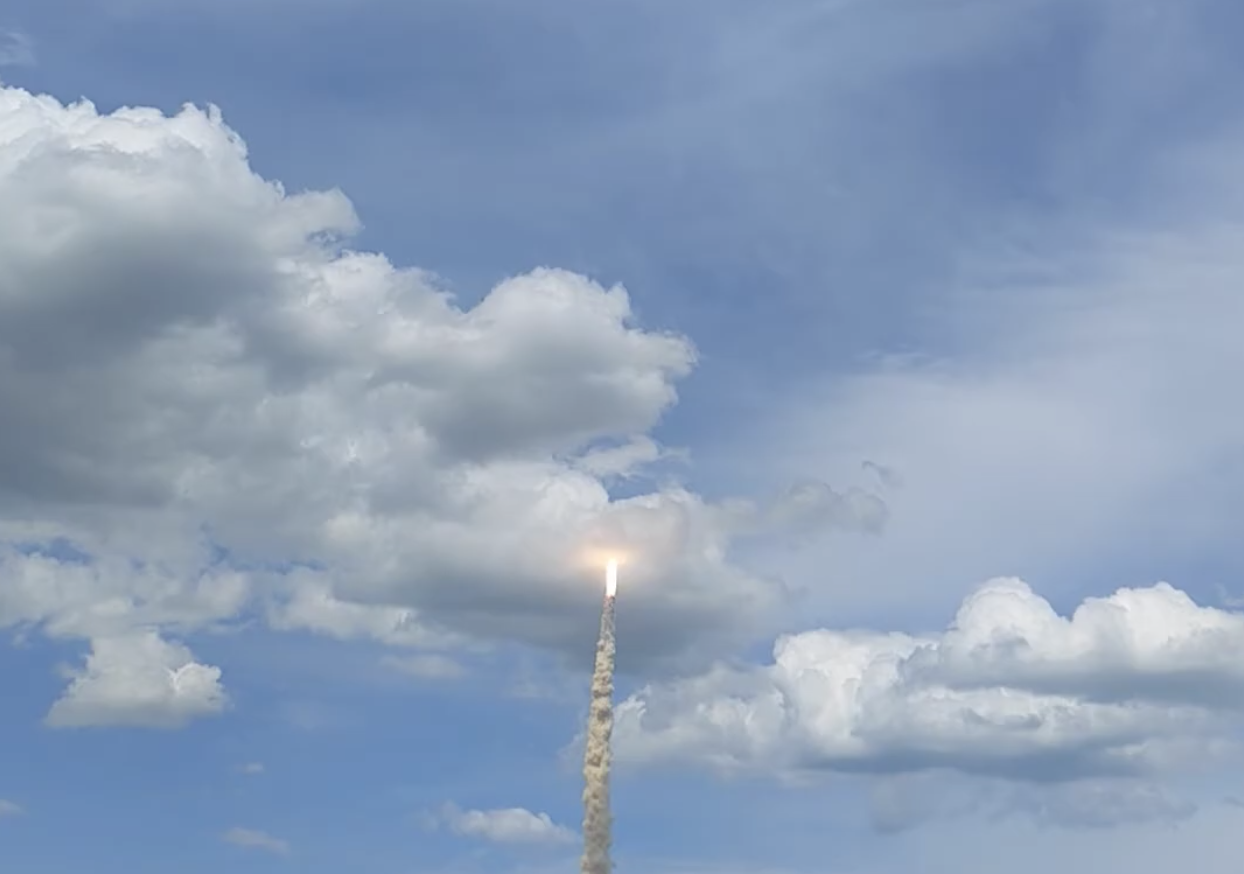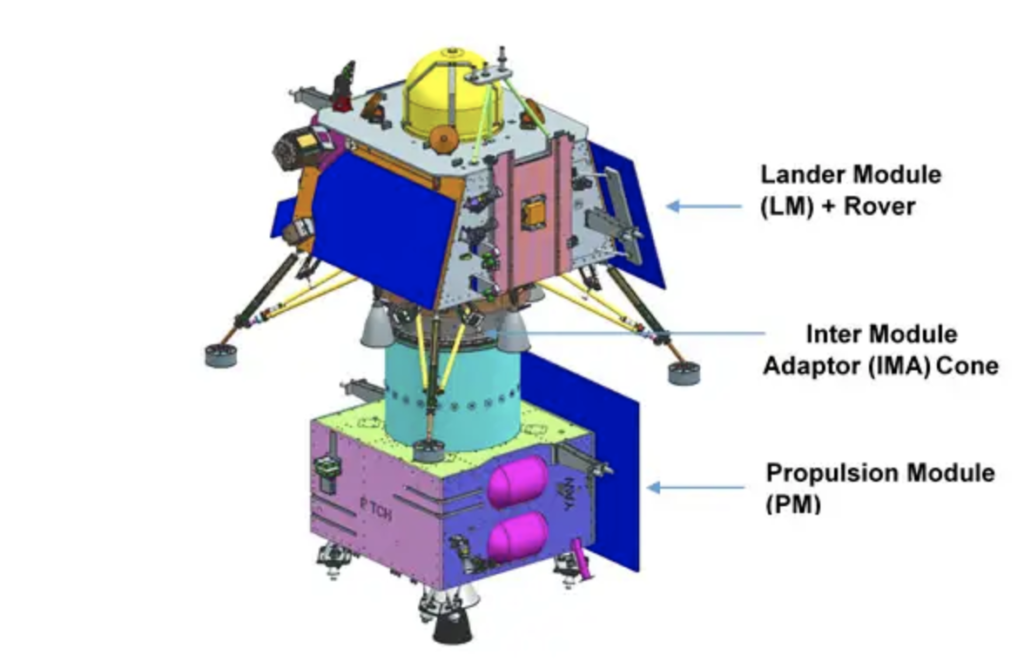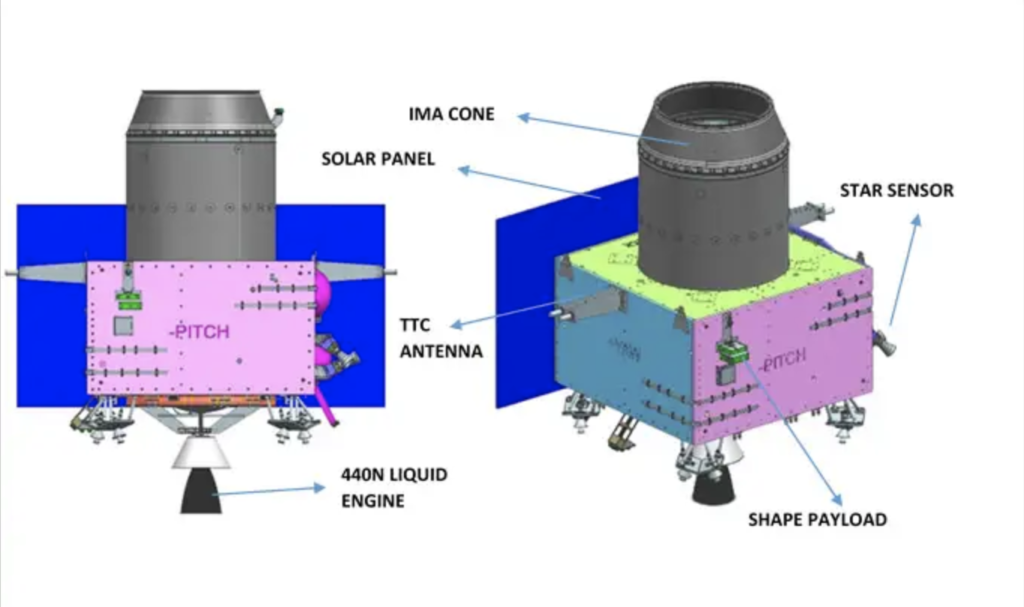Connecting kids with nature
a spectator’s view of Chandrayaan-3

Some fake videos of the Chandrayaan-3 launch are floating around, and can even have a pretty convincing description. One of the factors to discern the actual launch picture/video is the rocket leaving a white cloud trail.
A short official video is on the ISRO site, including views from the onboard camera.

The mission objectives of Chandrayaan-3 are:
~ ISRO
- To demonstrate Safe and Soft Landing on Lunar Surface
- To demonstrate Rover roving on the moon and
- To conduct in-situ scientific experiments.
Gives a context for the below content of a some explanation, based on excerpts from wikipedia…
Sriharikota is a barrier island off the Bay of Bengal coast located in Andhra Pradesh, India. It houses the Satish Dhawan Space Centre, one of the two satellite launch centres in India (the other being in Thiruvananthapuram). Indian Space Research Organisation (ISRO) launches satellites using multistage rockets such as the Polar Satellite Launch Vehicle and the Geosynchronous Satellite Launch Vehicle from Sriharikota. Sriharikota is selected by ISRO because of its proximity to the equator, it gives extra centripital force from the rotation of Earth.[1]
Chandrayaan-3 is the third and most recent lunar exploration mission by ISRO.[7] It consists of:
- a lander
- and the Pragyan rover
…but does not have an orbiter. Its propulsion module behaves like a communication relay satellite. The propulsion module carries the lander and rover configuration until the spacecraft is in a 100 km lunar orbit.

The launch of Chandrayaan-3 took place on 14 July 2023, at 2:35 pm IST[11] and lunar injection of 100 km circular polar orbit was completed successfully as part of phase one.[2][12] The lander and rover are expected to land near the lunar south pole region on 23 August 2023.[13]
Chandrayaan-3 comprises three main components:
Propulsion Module:

The propulsion module will carry the lander and rover configuration till 100 km lunar orbit.
It is a box-like structure with one large solar panel mounted on one side and a large cylinder on top (the Intermodular Adapter Cone) that acts as a mounting structure for the lander.
In addition to the lander, the module carries a payload called Spectro-polarimetry of Habitable Planet Earth (SHAPE) to study the spectral and polarimetric measurements of Earth from the lunar orbit in the near-infrared (NIR) wavelength range (1-1.7 μm).[9][8]
Lander:

The lander is responsible for the soft landing on the Moon. It is also box-shaped, with four landing legs and four landing thrusters of 800 newtons each. It will carry the rover and various scientific instruments to perform in-site analysis.
Rover:

Chandrayaan-3 Rover Overview:
- Six-wheeled design
- Weight of 26 kilograms (57 pounds)
- Range of 500 metres (1,600 ft)
- Scientific instruments including cameras, spectrometers, and a drill
- Expected lifespan of one lunar day (14 Earth days)
- Communication with the lander and ground control team in India
And where is it now?
What if traveling to the moon becoming a regular commute🤔 …😉
Recent Comments